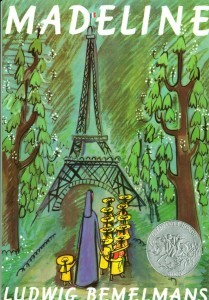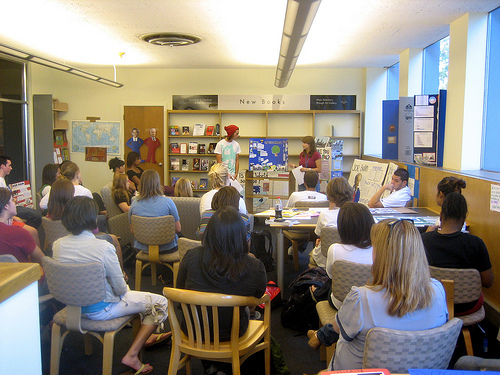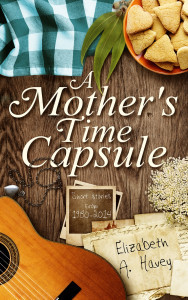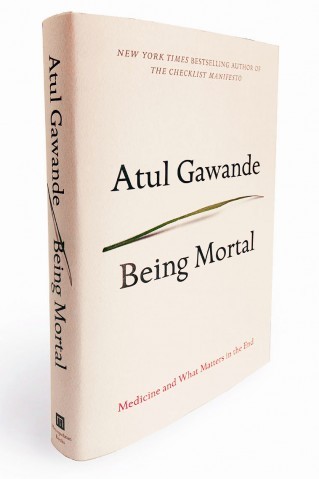Elizabeth A. Havey's Blog, page 37
December 6, 2015
Once Upon A Time: New Ideas Clashing with Old

This creature is a metaphor for a NEW SCARY IDEA.
If we were to compose a story about who we are and what we believe, we might begin with the words: Once upon a time. The composition might be a letter or a simple statement. But it would reveal things and thoughts that happened to us in our PAST that have craved us into the people we now are in the PRESENT. In most cases, we cannot divide one from the other–what we believe about life, about ideas in the present are always shadowed by our past.
Living is never static and how we see yesterday is colored by what is happening today and vice versa–how we see today is colored by how we lived in the past.
For many that explains why THE PAST seems to shine more brightly as if the reality we lived BEFORE has more power over us than the present. Photographs can be metaphors for this: we look upon snapshots of graduations, weddings, family portraits and the youth we see in them creates a profound longing. Nostalgia becomes a physical feeling. And we think: life was better then, life was simpler, the grass was greener, youth allowed us to conquer negatives and to plunge from one day to the next.
Sound familiar? Actually some of it is true. The younger a healthy human is the further away from death he or she mentally resides. The powerful feeling that life extends into some unknown infinity allows the car or motorcycle racing, the experiments with drugs and sex, the instant fights that hurt friends etc. Because there’s lots of time to fix things. Death or illness or accidents aren’t on the wavelength–at all.
The variable, of course, is individual life experience: the child with cancer has more empathy and knowledge of the preciousness of the future than many adults. The immigrant who is finally living in a warm building with plumbing and three meals a day complains little about the weather or traffic on the highway.
But all of us –the young, the rich, the dying, the discriminated against etc–have ideas about living and often live for those ideas. And because ideas vary there are clashes in thought and arguments about those thoughts–about the way people look, dress and live.
Once upon a time, I grew up in a middle class neighborhood of whites, Catholics and Protestants. If there were clashes, they were between the last two–like a priest telling us we couldn’t frequent the YMCA. Fortunately, those days passed, along with lots of others that included racial discrimination–insidious, but present. I wrote about this in my post: Fires a Story About Anna, THE HELP, in My Life. When Anna cleaned for us, I was a child and I had some understanding and empathy–but not enough. In high school and college I began to live in a more integrated world, but teaching in an integrated school truly woke me up.
My close friend Linda and I attended what our high school called a Human Relations Workshop. We were eager to participate, our desire to be fully a part of society newly awakened–after all we were college graduates bearing the shining flags of freedom, inclusion and yes, empathy. But the awakening that night was daunting–the African Americans who ran the sessions at one point singled me out and accused my father of raping black women. I didn’t get it–I shouted out NO, I started to cry–how could they say that–my father was a good man who died at a young age. The method was to break me down, to take away the barriers I didn’t realize I had built.
I get it now. I had to cross some threshold, to realize how prejudice lodges deeply in the brain and rears its ugly head–sometimes when we are not even aware of it. Having lived in the world I had lived in I was in some way complicit. I changed. THESE WERE NEW IDEAS and they frightened me at first, until I could get my proverbial head around them.
It’s a continuum: the acceptance of change, like our very own body that changes on us. Oh yes, we fight back with diet and exercise, with creams and sunblock–but it’s unwinnable–unless you have tons of money for cosmetic surgery, but that won’t stop your heart from wearing out or other system failures. We must accept bodily change and death, because we have no choice.
But on a much more positive note, we must accept new ideas for the same reason. And it is how we accept, the nature of our acceptance that can make a difference–that can have us longing for the future instead of the shadowy past–even though new thoughts can be frightening. I like to look at the words UNITED STATES and then abbreviate it to US–which is the objective form of we–in other words us. Let us approach new ideas with open minds. Evaluate, consider, refrain from immediately yelling NO!! Could we become the United States of new ideas?
Marie Curie wrote: Be less curious about people and more curious about ideas. (what a potential leader’s ideas are)
Joseph Stalin supposedly said: Ideas are more powerful than guns. We would not let our enemies have guns, why should we let them have ideas.
Pope Francis implores us: Even today we raise our hand against our brother… We have perfected our weapons, our conscience has fallen asleep, and we have sharpened our ideas to justify ourselves as if it were normal that we continue to sow destruction, pain, death. Violence and war lead only to death.
Do you have NEW IDEAS about how to live in the coming weeks, months and years? I love this commercial from GE. At first I didn’t GET IT, until I really looked and realized that yes, new ideas are scary, frightening, but they are the legacy of living. We bring children into the world to replace us–our minds generate new ideas to alter, change, perfect the old ones. Once Upon A Time, we changed the world. And we must be an US (us) country that represents inclusion (people get angry when they are not invited to join in), helpfulness and inevitably peace. We cannot go backwards to fear, exclusion and hate.
Thanks to Brainy Quotes, Thanks to Bodin Sterba Design
(Visited 7 times, 7 visits today)
November 29, 2015
Nothing Better Than A Book
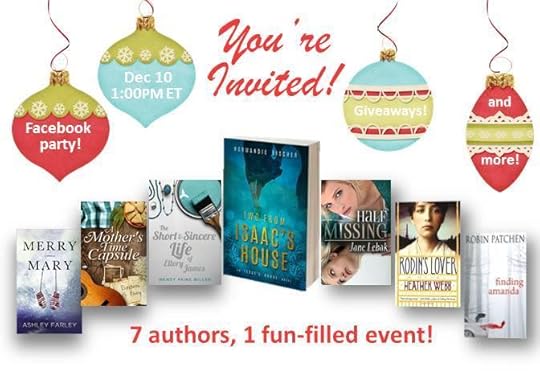
No matter where you are in holiday gift giving–there is nothing better than finding a good book to stick in a stocking, wrap up and put under the tree or offer for one of the blessed days of Hanukkah. Thanks to author and friend, Normandie Fischer, this post is bringing you seven amazing fiction choices to add to your Gift List. Check out the summaries below and head to your favorite book seller–after all tomorrow is Cyber Monday! And please join our author group for our Facebook Party on December 10th at 1:00 pm EST for Giveaways and chats.
Normandie Fischer—Two From Isaac’s House, A Story of Promises Journey with Rina Lynne who though recently engaged decides to spend her inheritance before settling down. Her travel adventure starts in Italy where Rina meets Tony (aka Anton) an engineering geek whose Israeli cousins have convinced him to become a sort of spy. When Rina comes on the scene, Tony loses a grip on his assignment and Rina, who is part-Jewish, forgets her fiancé, allowing herself to become involved with this Arab-American. Against the gathering storms of the Middle East, certainly more storms are brewing.
Ashley Farley—Merry Mary This novel explores a theme that is perfect for Christmas. Investigative journalist Scottie Darden longs for a child. While photographing the homeless for a series she calls Lost Souls, Darden comes upon a tent in a downtown city park were an infant child is alive, but the mother dead. Lacking her cell phone, Scottie follows her instincts and takes the baby home. She promises herself she will report the child’s situation, but as a strong bond forms, she rationalizes her decision to keep the child, knowing she might face a life on the run or worse–imprisonment for abduction. Farley’s story examines the connection between a woman who stumbles into the role of mother and the child who definitely needs that person.
Wendy Paine Miller–The Short and Sincere Life of Ellory James Ellory James has six months to live and she is only seventeen. As her mother frets and worries, Ellory agrees to create a bucket list for her remaining time on earth. But Ellory is mischievous, asking her neighbor Pete to help her make it look like she’s truly carrying out ten of her lifelong dreams. She’s actually decided to fake the entire bucket list concept, until she completes the first one of the ten, which just might be the most important one of all. Miller’s book asks the question: what if life isn’t about the things we do as much as it is about WHY we do them and who we do them with.
Me, Elizabeth A. Havey–A Mother’s Time Capsule Yes! I’m included in this lovely seven author group, but because you’ve heard about my book before, I’ll make it truly short. The book of 13 short stories about motherhood includes: a hyper-fearful mother; a mother struggling with the life-chore of revealing what sex is; an empty-nest mother facing surgery and loneliness; a mother whose daughter attempts suicide; a pregnant single mother; a mother whose child goes missing–and more. “Lovingly detailed, sometimes heart-wrenching stories of real women who come alive on the page. Moving and powerful.” Anne R. Allen, bestselling author of the Camilla Randall Mysteries
Jane Lebak–Half Missing As an arsonist inspector, Amber Brickman sifts through burn sites looking for evidence, working against the memories of weeks before her wedding when her fiancé was murdered. But family history never departs and Amber’s mother insists that Amber had a twin, stolen at birth. When a woman on the news looks and sounds like Amber, her mother is convinced–this is the missing twin. At first Amber wants nothing to do with what she considers insanity. But as her mother pursues the past, Amber is drawn into the search–one that requires she risk everything, her job and her heart, in the process.
Heather Webb–Rodin’s Lover Known for her historical fiction, Heather Webb’s Rodin’s Lover is the story of Camille Claudel, an aspiring sculptor who becomes the apprentice of the amazing and world-renown Auguste Rodin during the Belle Epoque in France. Claudel becomes his muse and as their love affair proceeds they inspire one another to create groundbreaking works of art. But being a woman in a time period unable to honor female achievements, Camille’s success is pushed aside by Rodin’s rising star. When she finds herself caught in a tragic dilemma, obsessed with him and with her art, crossing the line into madness just might be her only escape.
Robin Patchen– Finding Amanda Seduced as a teen by her psychiatrist, Amanda Johnson is now a chef and a popular blogger. When she decides to write a memoir that will include the devastating events in her teen life and help her heal, her estranged husband Mark, a contractor and veteran soldier, tries to stop her, worrying that the psychiatrist might reenter her life and attempt to silence her. Amanda fails to listen to such advice and to hear that Mark still loves her. Vulnerable, she travels and does encounter her abuser from her past, only to have a stranger rescue her and offer protection. Now Mark must save Amanda from the psychiatrist who threatens her life and from the stranger who threatens their marriage.
As December approaches, I wish all my readers warmth and happiness. Holidays can be joyous–but they can also be stressful. Remembering the important things, like the love of family and friends, is what should truly be our focus. Sounds like a topic for another post!
(Visited 17 times, 17 visits today)
November 18, 2015
Do Something Kind Today: Support a Caregiver
 November is the month of gratitude, a time for thanking those we love and care about. It is also National Family Caregivers month and AARP has started an initiative to honor, support and say thank you to the 40 million unpaid caregivers in the U.S. Through Random Acts of Kindness, you can help a caregiver for a day or for a few hours by extending a helping hand. We hope you will do what you can.
November is the month of gratitude, a time for thanking those we love and care about. It is also National Family Caregivers month and AARP has started an initiative to honor, support and say thank you to the 40 million unpaid caregivers in the U.S. Through Random Acts of Kindness, you can help a caregiver for a day or for a few hours by extending a helping hand. We hope you will do what you can.It is fitting that Boomer Highway support this initiative as many caregivers are boomer women, often sandwiched between the needs of their parents and their own kids. Boomer Highway actually began as a way to help men and women like me who found themselves on the busy highway of caregiving for an aging parent and also helping children at their various stages of life. I am grateful to all my readers and to those of you who have shared your own caregiving stories.
You’ve heard me say this before, but a very wise woman once said to me when I was down about some things in my life: The best way to deal with that is to go out and help someone else. It’s a profound truth. So today I am celebrating the people I know who have done a random act of kindness so that a caregiver can get a breath.
When my mother was in Hospice, there was Edna–a woman even older than me who stopped in to see my mother on a regular basis. She would help her into her wheel chair and take her outside into the garden–because if there was one thing my mother loved it was feeling the sunshine on her hands and face. There was Debbie, Nuala and Bess who visited my mother, celebrated holidays with her, and always brought a gift–large or small it meant so much.
Volunteering in any way you can is an act of kindness. Whether it’s reading to the child of the caregiver, or taking the caregiver’s patient for a walk, preparing a meal for a family who is overloaded with caregiving duties, or taking over so the caregiver can get a haircut or keep a doctor’s appointment–whatever you can think of to do, you are making a difference and I celebrate you.
So let’s do this thing: WATCH HERE.
And for those reading this who are caregivers, here are a few suggestions for dealing with caregiver burnout:
Spend time in your cave: whatever that means, go off by yourself and read, write down your thoughts, listen to music, or just sleep. Make that time all about you.
Get a check-up: see your doctor and discuss the stress you are under, making sure you are not neglecting your own health.
Talk frequently to someone who gets you: sometimes it’s hard to find a soul mate who truly understands your particular stress and allows you to pour out your feelings of frustration and possibly anger, which you need to do.
Set up a schedule: if you are working full or part time and have various duties you perform as a caregiver, try to establish a routine. Routines can be calming.
Try to be prepared: this is the other side of routine as one of the major negatives of caregiving is the unexpected. The unexpected is part of caring for someone gravely ill or dying. Deal with wills, trusts, funeral arrangements etc NOW!
Remember, today you might be on top of the world–but there is always tomorrow. A random act of kindness is paying it forward. The support you give a caregiver will always be remembered and you will feel great.
“This is a sponsored post on behalf of Element Associates and Midlife Boulevard.”
Photos: AARP
(Visited 26 times, 12 visits today)
November 15, 2015
Dear Paris, We Love You
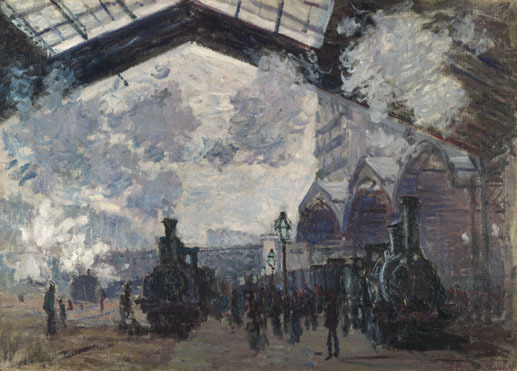
St. Lazare Train Station by Claude Monet
The weekend attacks perpetrated by terrorists in the amazing, beautiful, culturally-impressive city of Paris, France at first makes me feel that anything I might write today will have little meaning in the face of tragedy, violence and brutal disregard for life as we know it. But the more I thought about it, the opposite seemed right: celebrate the things that PARIS stands for. Shout out its history and vibrancy. And most of all, celebrate the culture that it has given us through books, music, art, architecture and the beauty of the French language. Dear Paris, Je t’aime, nous vows aimons. Vive Paris!
In the U.S. many children are first introduced to Paris via the lovely story of Madeline. With it’s amazing illustrations and it’s rhyming story line, the book by Ludwig Bemelmans started a series of stories about the smallest of the girls that live in a Catholic boarding school in Paris. Madeline might be tiny in stature, but she seeks adventure and encourages children who read about her to do the same. She emulates strength, a Parisian characteristic. French literature has given us writers such as Honore de Balzac, Gustave Flaubert, Georges Sand, Simone de Beauvoir, Moliere, Guy De Maupassant. Certainly Victor Hugo’s Les Misérables champions the strength of the common man and his strength in the face of evil. Below is a statue of Balzac done by Auguste Rodin, a French sculptor whose work is know world-wide and whose work is often considered the spark of modern sculpture.
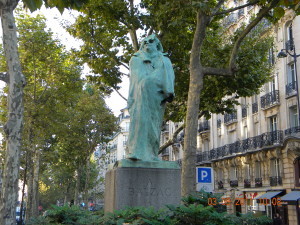
Statue of Balzac, Paris
For centuries French artists have gifted the world with innovative movements in painting and sculpture. The French impressionist movement brought to all art lovers scenes of Paris and the surrounding countryside. (See painting at the head of this piece.) A large metropolitan American art museum is simply not complete unless it has the works of Claude Monet for viewing. Considered the founder of the French Impressionist movement, Claude Monet often painted outdoors in nature, his goal to capture the changes and the movement that light provides a chosen subject. He would often paint the same subject many times–only the time of day or the season changing–and thus the work itself changing. His perceptions of nature heralded the importance of plein-air landscape painting.
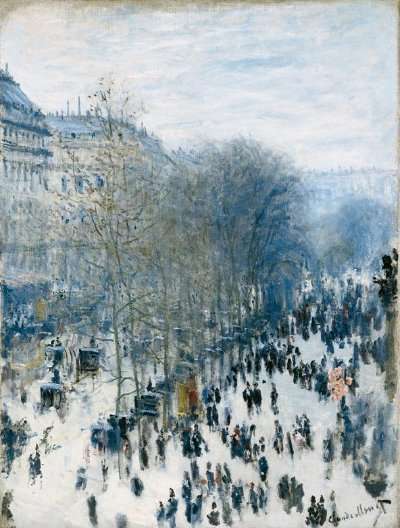
Parisian Boulevard by Claude Monet
This picture of a Parisian Boulevard shows Paris’s fascinating architecture, rows and rows of buildings with the famous French mansard roof. This roof style allows for more interior or attic space, thus allowing a builder to add another storey without using masonry. The design was often used by Francois Mansart (1598-1666) a French architect. A popular tale that has been refuted is that this roof style served to shelter it’s owners against taxes as well as rain. But some historians say the Fench window tax for a full storey in a building did not exist until 1798, years after Mansart’s death and did not exempt mansard windows.
Paris has gifted the world with opera, ballet and orchestral music, jazz and piano music. Parisian artists walked the streets of Paris and were inspired by its beauty and the lovely cadence of the French language: Debussy, Ravel, Saint Saens, Bizet, Berlioz, Satie, Poulenc, Franck, Faure and Gounod–to name only a very few.
And in today’s creative world, novelists and screenwriters, playwrights and poets write about Paris–its people, its culture, its history. American women long to look and dress like Parisians and the perfumes and cosmetics that come from Paris have been prized by women since Catherine de Medicis, wife of King Henri II, was said to have introduced the use of perfumes to the French.
So this post celebrates and honors French culture and the people of Paris. May their rich heritage which has brought so much beauty to the world continue to inspire us. Let us all wish them peace and safety today and always. Dear Paris, Je t’aime, nous vows aimons. Vive Paris!

The Louvre, Paris
Thanks to: www.ala.org, impressionists1877.tripod.com, www.dreamtime.com, www.entertainment.howstuffworks.com, www.e-architect.couk
(Visited 14 times, 14 visits today)
November 11, 2015
Book Giveaway: A Mother’s Time Capsule
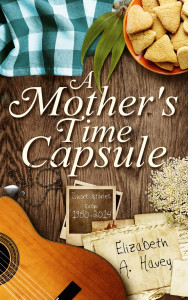
13 stories about motherhood
Boomer Highway Readers:
The GIVEAWAY is for FIVE SIGNED COPIES of A MOTHER’S TIME CAPSULE!
To sign up for the Giveaway click here or http://elizabethahavey.com/a-mothers-time-capsule-giveaway/
TO ENTER: fill in your contact info and leave a comment in the box on the Giveaway page. AND for a SECOND CHANCE to win, provide your email address. No purchase is necessary to participate. (Directions are on the entry page.)
Winner selection is based upon a random drawing from all comment entries and people on the email list after the close of the sweepstakes. Winner will be notified via email and must provide their mailing address to receive the prize. If winner does not provide their mailing address within two weeks after being notified of winning, an alternate winner will be chosen. Entry is limited to U.S. residents.
The Giveaway runs from 12:01 a.m. Pacific Time Tuesday, November 10, 2015 to midnight Pacific Time on Tuesday, November 24, 2015.
Here are a few of the reviews I have received on Amazon.
Lovingly detailed, sometimes heart-wrenching stories of real women who come alive on the page. Moving and powerful. Anne R. Allen, bestselling author of the Camilla Randall Mysteries.
I’ve long been a fan of Elizabeth A. Havey. I’ve followed and welcomed her writings on Boomer Highway.org, an exceptional blog of perceptive and stylish essays. Now with the publication of A Mother’s Time Capsule, Havey gives us an important collection of powerful and beautifully crafted short stories, and begins to take her place as an important American writer. James Wagenvoord, author
This author has a unique voice and writes with such profound emotion it’s as if she’s left a part of herself on every page. These are exceptional stories, ones I found myself immersed in from first sentence to last. I enjoyed the fact they were short stories and I could dole them out as a treat at the end of the day–but I cheated (just like I do when I try to limit chocolate) and read more, because I didn’t want the stories to end. Highly recommended, and I’m looking forward to her next book. Amy
The extraordinary imagery of these stories is evocative of the early years when I was raising my two sons. “A Mother’s Time Capsule” artfully describes the woes and wonder of being a mother. I will read it over many times. Geri
Havey writes beautifully with a sharp eye for the particular and deep sympathy for her characters. Anyone interested in nursing and parenting should read her stories. John
Want to see if you would enjoy my stories? You can read two of them that I have previously shared on Boomer Highway. To read WINDOWS click here. To read PUMPKINS click here.
We all lead busy lives and being able to read one story–with a piece of the chocolate of your choice–is a great way to relax at the end of the day.
Thanks for your support. Questions about the giveaway? You can leave a comment on Boomer Highway.
(Visited 2 times, 2 visits today)
November 8, 2015
California Art: From Nature and from Human Hands

URBAN LIGHT (see below)
We Californians may have to save water: never let the water just run, plant dessert cultivars, time our showers. But the up-side of our continual good weather is that we can almost always walk out the door and fulfill a plan to experience works of art: art from nature and art from human hands.
Today my husband and I were up for trail walking at Wildwood in Thousand Oaks. And wow, did we get a taste of covering the miles and I’m talking not only the 5.7 miles we covered but the elevation and descent which was 606 or the equivalent of going up and down 60 stories. We burned 934 calories, but quickly replenished some of them when we got home. The photo above and the ones below are sights we saw today at Wildwood Park. There is lots of history here, as many of the wild west shows that aired in the 50’s were filmed in these hills. And yes the falls were still flowing, fed by underground springs. Nature supplies many gifts.

Paradise Falls

A little shade on this trail.
And when you are hungry for art that was sculpted or painted with a brush or was first  simply found objects now placed and arranged in unusual and compelling ways, there is always LACMA, Los Angles County Museum of Art. We visited there ten days ago and were delighted with what we found. URBAN LIGHT is a large-scale assemblage sculpture by Chris Burden located at the Wilshire Boulevard entrance to LACMA. The installation consists of 202 restored street lamps from the 1920s and 1930s. Most of them once lit the streets of Southern California. The cast iron street lamps are of 17 styles, which vary depending on the municipality that commissioned them. They range from about 20 to 30 feet (6 to 9 meters), are painted a uniform gray and placed, forest-like, in a near grid. The lights are solar powered and switched on at dusk. (above, URBAN LIGHT AT NIGHT. Top of the post: URBAN LIGHT, midday.)
simply found objects now placed and arranged in unusual and compelling ways, there is always LACMA, Los Angles County Museum of Art. We visited there ten days ago and were delighted with what we found. URBAN LIGHT is a large-scale assemblage sculpture by Chris Burden located at the Wilshire Boulevard entrance to LACMA. The installation consists of 202 restored street lamps from the 1920s and 1930s. Most of them once lit the streets of Southern California. The cast iron street lamps are of 17 styles, which vary depending on the municipality that commissioned them. They range from about 20 to 30 feet (6 to 9 meters), are painted a uniform gray and placed, forest-like, in a near grid. The lights are solar powered and switched on at dusk. (above, URBAN LIGHT AT NIGHT. Top of the post: URBAN LIGHT, midday.)
We also experienced a work of art that my son-in-law was eager to see. It was a brilliant afternoon when we encountered and explored from all angles LEVITATED MASS. This is a 2012 large-scale sculpture by Michael Heizer. The installation consists of a 340-ton boulder affixed above a concrete trench through which visitors can walk. The nature, expense and scale of the installation made it an instant topic of discussion within the art world. Tongue in cheek comments: Let’s start with the numbers, which are impressive: a 150 million-year-old granite boulder more than 21 feet high and weighing in at 340 tons. It took 11 days to transport that boulder, via a 206-wheeled trailer, the 105 miles from Riverside, CA to the campus of the Los Angeles County Museum of Art at a cost of $10 million, to be put in place as part of a massive and controversial artwork. (from levitatedmassthefilm.com)

Looking up from the front side.

This reveals the amazing scale of the project.

Visitors can walk under the rock to experience every angle. We did.
Though art is all around us and we are soaking up as much as we can, I do miss the change of seasons and I know right now in my old haunts there is art all around. Yes, the colors of those brilliant autumn leaves are painting pictures as they toss in the wind or create colorful piles in the grass. So here’s a photo–simply to remember them. But YAY, I don’t have to rake them up!
Photos credits: Beth Havey, hikespeak.com, www.toaks.org, jessiestrails.blogspot, David Stillman, Wildwood Park, Thousand Oaks Thanks to Wikipedia.
One of my oak trees from the house in Des Moines.
(Visited 6 times, 6 visits today)
November 1, 2015
The Girl Thrown Across the Classroom

My blog post WHAT DO TEACHERS REALLY DO? has consistently been one of the most read posts on Boomer Highway. Why? Because many people don’t really know what teachers do or they are teachers themselves and want to know what another teacher thinks about her role in teaching children. And I want to emphasize the word children. Yes, I know teens can be unruly, can say nasty things, can sometimes bring weapons into a school. I’ve lived that. Not in 2015, but in the 1970s. More later.
But I am standing on the side of a recent argument to say—no policeman or guard or teacher or principal has the right to throw a child across the room —unless that adult’s very life is in danger. And certainly not over a cell phone.
Resulting injuries: ABC news reported: The 16-year-old has a hard cast on her arm extending to her thumb after going to the hospital Monday night…She also is complaining of neck and back injuries, and psychological injuries.
I don’t care if she was five or seventeen, she’s not an adult. Yes, she was being intractable, but by the time the police officer had been called to the room, the cell phone had been put away. And even if it had not, there’s a lot more working in the life of that sixteen-year-old girl that deserves to be figured out. Sorry, but in the context of teaching THAT HAS ALWAYS BEEN THE CASE. You hope that you can walk into the classroom, give your lecture or test or assignment or start a rousing discussion and everything will be great. But that’s not reality, ever. Not in 1970 and not now.
I taught at Bloom Township High School in Chicago Heights, Illinois. My school was a microcosm in the early 70s—Italian Americans, African Americans, whites from the south moving up to Chicago for better jobs, children of families whose presence in the suburb for years gave them ownership. Result: problems—riots, fights, rule-breaking, school closures for safety reasons. A policeman in the hallways (yes, this was unfortunate but no student got thrown across a room). Staggered scheduling to avoid having too many students in the building at one time.
And what did we teachers do? We worked, we taught, we followed all the changes and we did everything we could to help our students. Everyone of them:
the girl in Humanities that told me right out in class that when my husband traveled he was having affairs—interesting way to get out of talking about THE SCARLET LETTER.
the boy who came to my classroom every morning and flirted with me in a joking way, but I was only 23 and he was 17.
the 9th period coalition whose goal was to break me down in front of the class so that they wouldn’t have to work. They criticized everything I said, questioned everything I tried to teach them for weeks. I did break down. But the next day I was right back at it. In the end, they apologized.
the kids coming to school sick, unfed, unclean, angry; kids sleeping all through class; kids telling you to f-yourself;
the kids who needed love as well as education, who needed someone to stand up for them and give them a chance to get on in the world. (Read this post about a teen’s attitude toward sex)
I think a few things are operating in this recent situation in a South Carolina school where a sixteen-year-old girl was thrown across the room. And they frighten me. When I was teaching, certainly the cell phone did not exist. (I remember in grade school an old friend of mine freaked out his teacher by holding a cardboard box to his ear, pretending it was a transistor radio.) Kids do that stuff. They try to throw you off your routine so they don’t have to WORK. But you can’t freak out. You have to maintain your ground.
Rules exist to provide a teaching atmosphere. Today, put your cell phones away. When I taught, it might have been: taking a bag of chips away; breaking up a tussle in the back of the room; waking up a student—if they can’t stay awake send them to the nurse’s office; and yes if they come at you with some scary bravado, you have to do your best to stand your ground. During a riot a student came at me with a lead pipe—but I knew the student’s name and as soon as I used it, his affect changed—and I was fortunate that another teacher was coming through the classroom door. (If there’s a gun, you are out of luck. But I would never, ever teach in a school that allowed teachers to be armed. I’d rather get a job at Target than live with that.)
And I am sure the ability to NAME the student is the same today as it was then—naming starts the process of settling them down. Anonymity is the key to breaking the law. When that goes away, often the behavior changes. Oh, the anger might still be there, but the situation usually opens up to less threatening behaviors.
The teacher in the South Carolina case probably should have ignored the phone after the first request was made. And it is unfortunate that the student was ordered to leave the room. Was she being sent to the dean’s office, a counselor, the principal? Would this harm her standing in school, make her family really angry? Yes, having her leave would have relieved the overall tension in the classroom, but what the teacher did simply escalated it. What really puzzles me is that this event occurred in October when a sense of comradery should already be part of the classroom atmosphere—especially today when many teaching manuals support students working on projects together.
The climate of that classroom says a lot about what happened. If this student felt isolated and ignored, that would fuel her refusal to comply. Does the teacher need to re-examine her teaching protocols? Is the teacher burned out and can no longer deal with such episodes? Another female student came to the girl’s aid and she too was arrested. Really? And were the rest of the students in the classroom just entertained by what was going on? I think they might have quietly been terrified.
It all factors in and says much more about the incident than this comment in THE WEEK: David French in the National Review: I’ve watched the video several times, and ‘I keep coming to the same conclusion: This is what happens when a person resists a lawful order from a police offer to move.’ The student could have gotten up when the teacher demanded that she leave, or when the school’s administrator made the same demand. Instead she tried to ‘commandeer the classroom indefinitely’ giving Fields no option but to use physical force to remove her.”
Wrong on so many levels. I don’t know how old David French is, but apparently he can’t reach back to his teen years and feel that frightened, heart-pounding feeling when you get yourself into a tight spot. This was no preplanned sit-in. Maybe this student had a history of non-compliance and that’s why the teacher kept going up the line. But certainly a cop wasn’t needed. Wait until the bell rings and the class is over. Talk to her. Try to get her to the counselor’s office—if one still exists. This is a kid we are dealing with.
Teachers often have stressful jobs. I know nothing about this teacher and probably never will. But I am hoping beyond hope that his or her teaching methods begin to include building an atmosphere in the classroom that is open to LEARNING. Not open to the clashes and conflicts that we see online every day, hear on the news every day, often feel when we are out in the world. You can’t LEARN if you feel you are in the middle of a battlefield.
The tension and struggles of the world, of governments, of families—have now infected our student population too. Policemen regularly walk the halls of schools. Guns get into schools. Teachers fight with school boards and administration more than ever. So what are we teaching our children as these changes take place?
That life is about bullying, conflict, division, anger—and being intractable. When it should be about communication, accepting the excitement of differences, learning to work together.
The student thrown across the room should become a symbol for all that has to change in schools. I think schools were created to be a place of learning, not another battleground where someone is so focused on winning that a child is eventually harmed.
THANKS TO PROFCAMP.TRIPOD.COM
(Visited 5 times, 5 visits today)
October 25, 2015
Raise High the Roof Beam, Carpenters
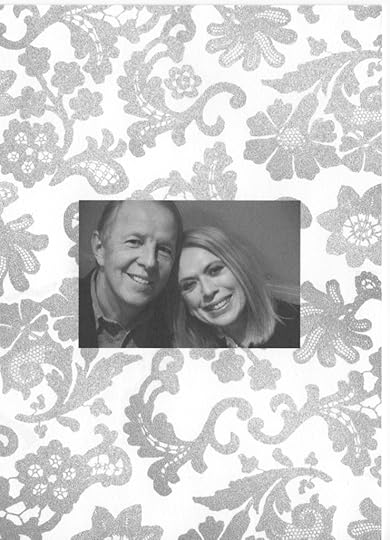
The Bridegroom and the Bride.
“Raise high the roof beam, carpenters. Like Ares comes the bridegroom, taller far than a tall man.” ― Sappho
My brother got married. Yesterday! My brother is tall to begin with, but this wedding day truly honored the line from the Sappho poem. And the celebration of the wedding will continue on and on. Here is why.
My brother Bill is no ordinary brother–in fact I do not have ordinary brothers–my two are extraordinary. But this was the marriage of my younger brother who in his sixties has never been married. Oh, women had tried to get him to tie the knot, but he was looking for the mate that would share with him the marriage he wanted, whose own take on being married would echo all the “family” memories that make Bill an amazing, giving, creative, understanding person. And he found that bride in Rita. Lovely Rita we often call her, from the Beatles song Lovely Rita Meter Maid, because Bill has been immersed in the music of the Beatles since “I Wanna Hold Your Hand.” Not only does he know everything there is to know about the group, but he plays their music on his guitar, sings the lyrics beautifully and has every album and song they ever produced. In his living room, Bill has a photograph with one of the Beatles’ producers, George Martin. His admiration for the Beatles definitely helped propel him into the music business where he has been successful in production and promotion for years.
Rita loves music too! Good thing, though her taste runs more toward Mozart. Bill has written a song for Rita–it’s what he does for people he loves. It’s such a gift to get your own personal song. And on the wedding eve, my son Andrew, who walks in his uncle’s footsteps, performed a song he had written for Uncle Bill, with his sister, Christie–who wrote the most amazing lyrics. Many people cry at weddings. EVERYONE cried when they performed this loving song for a man who has meant so much to all our family. (Below, me and Bill when we both had more hair.)
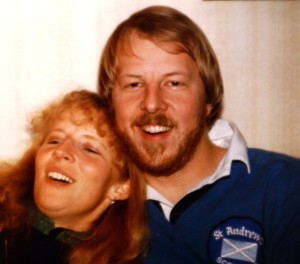
A few years back–the joy of family.
Bill often credits me with helping to raise him, because though we are only three years apart, the death of our father when we were so very young created a bond. I did what I could to take care of my little brother and that continued on into grade school when we became latch-key kids and we would meet, walk home together and I would make him lunch. Little things, but they bonded us big time. Believe me, he has repaid me over and over with the love and generosity he has showered on my family–my husband and my children.
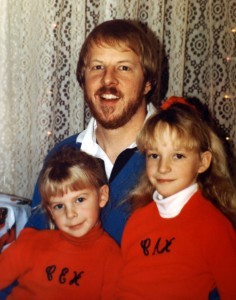
My daughters and UB.
Our son Andrew and Bill love to jam, to talk about music and guitar riffs and share their work. One thing about this amazing new bridegroom–he is never too tired, never too busy to give you what you need: advice, comfort, support and always love. Or he’ll drive you wherever you need to go, encourage you to strike out on a new pathway.
Thus it is exciting to see Bill and Rita beginning a new life together. We know it will be full of music and laughter. And Rita’s amazing cooking, which is often supported by the produce she grows in her bountiful garden. They will travel and watch the Blackhawks and the Bears. Life together will be awesome. Life will be full.
I raise a toast and metaphorically the roof, as I celebrate my brother Bill, the new bridegroom who is truly “taller far than a tall man.”
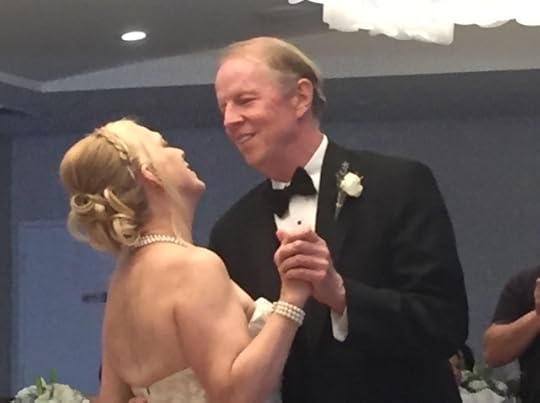
The Bride and Bridegroom
Photos, John Havey and family.
(Visited 53 times, 32 visits today)
October 18, 2015
PUMPKINS, A Mother and a Mother-in-law
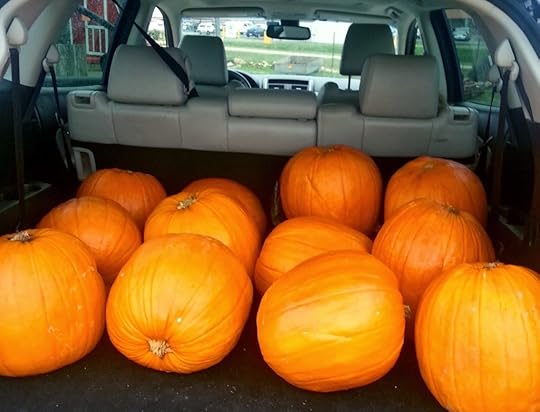
That day was a Friday and she drove with the pumpkins in the back of the car.
Dear Boomer Highway Readers. Happy Autumn, a time to put the garden to bed, dream about the coming holidays and picture yourself curled up with a book. After all, it’s the time of colder weather and strong winds, maybe snow and staying indoors. So find that warm corner by the fire or the heater and read! My offering? One of the stories from my collection of short fiction A Mother’s Time Capsule which was published in May. This is another short one. Comments and questions? Greatly appreciated. So whether you live in California where it’s cloudy and we had some misty rain, or in the Midwest and East where there’s sure to be snow, please enjoy. I think I love just everything about pumpkins.
Pumpkins
That day was a Friday and she drove with the pumpkins in the back of the car. They were going on the front porch. Now, this year, there would be only two. Heather drew the faces on in black magic marker. Maybe she would look more carefully at Heather’s pumpkin face this time. Children’s art revealed things.
She zipped the car through sloshy puddles under the viaduct. The windshield wipers set a pace. The pumpkins rolled in the back. She had been thinking about him off and on all day since it was his birthday. Only last year they had both, for a joke, entered the date and year of his birth in a computer. It told them his birth occurred on a Thursday. She had liked that. Heather, too, was a Thursday’s child. They all had far to go.
The traffic light was changing, running through the old cycle backwards—red to yellow to green. She worked the gears and hurried. Her mother-in-law was nervous about the dentist. It was crazy for her to be doing this, but she’d gotten into the habit. Keith worked. Who else would take her? And moments later, there was the straight brick apartment building, the yellow slanted lines in the lot.
“You know it’s Keith’s birthday?”
She nodded as Mrs. Oates climbed in, pressing her body against the other bucket seat. “Call him, Rachel, call him. He’d call you on your day, now wouldn’t he?”
Rachel backed the car down the drive.
“What’s that rattle, your car can’t need repairing already, you just—”
“Pumpkins,” Rachel said.
Mrs. Oates watched out the window. She shifted her body and filled the car with some cloying perfume. Rachel rolled down a window.
“Don’t open that now, please. I can’t afford to catch a cold. I’m going through all this pain right now, I don’t need–”
Her voice stopped. Rachel looked over and noticed that Mrs. Oates wore a new raincoat. Her mother-in-law wasn’t a fat woman, but she made great pies and cakes and made them constantly. The raincoat was a juicy berry color and it plumped around her. “I got him a lovely angora sweater for his birthday. It’s a blend. But I spent a lot of money on it.” Rachel decided Keith would hate it. He would complain about the tiny angora hairs messing up his dark pants.
“It’s hard getting to be my age,” Mrs. Oates said. “You have trouble getting to the stores and then when you’re there what do you buy your son? What? It was easy when he was little, but now?”
At the dentist’s they sat together on an orange vinyl couch. Mrs. Oates folded her glasses into a case. She snapped the case and then unsnapped it. She touched Rachel’s arm and told her about an exercise program that she watched. “The girls have these little tummies. You ought to do it, Rachel.” Her breath was warm and sick. Rachel thought about the mints buried in her purse. She thought about exercise. She didn’t need to lose weight, when you didn’t eat much, that wasn’t a problem.
The hygienist came for Mrs. Oates. She nodded for Rachel to follow. Root canal was somewhat serious in an older person with a heart condition. Rachel followed. She watched the berry-colored coat come off and she thought that cakes and pies were even worse for one’s heart. But it wasn’t her business. Not really. And yet when Mrs. Oates was settled in the chair and the dentist made Rachel look at the x-rays, look down into Mrs. Oates’ mouth to confirm, it was her business. No one else’s. She backed out of the room. She could still see Mrs. Oates’ grey hair against the back of the chair. She walked. Keith was 39. Mid-life. Mid-life crazies. Mrs. Oates’ hair, probably auburn, had spread out on a table, some delivery table somewhere, and then Mrs. Oates spread her legs and touched the roundness of her belly and used energy and will to push Keith out. Thirty-nine years ago. It was her business. Mrs. Oates a connection.
Rachel went and called Heather.
“Did you get them, Mommy?”
“Yes, two, one big and one medium sized. They’re in the car. Did you get a lot of homework?”
“I’m doing it. When you get home, then can we?”
“Yes.”
“I’m going to design my face on paper first.”
“Don’t spend too much time, Heather. Your homework.”
“The other kids were asking why we do it this way. They like to cut theirs. Yuck—all those seeds.”
“Heather, I’ll be home by six, okay?”
“Just listen, I forgot to tell you. I want to draw this picture for Dad’s birthday. I had a dream about it. The picture is me carrying a birthday cake, but it’s not a cake, it’s noodles—a noodle cake!” Rachel smiled, saying, “There must be some significance there.”
“Oh Mom—it’s just a dream. It doesn’t have to mean anything. Bye now.”
Rachel hung up. The little artist was always at work. Creativity clung to her like the fragile blonde fuzz that Rachel could see on Heather’s legs and arms when they wrestled in the sunshine. But Heather’s fingers didn’t always move the way she wanted. Her fifth Christmas, five years ago, she had worked at the card table every day. Rachel watched. Some of it was clay, some playdough, some drawing, pasting, cutting.
On Christmas everything went into a bag. During the gift passing, Keith got the first one—a playdough face with runny-black hair and bulging eyes. He started to laugh before Heather could tell him the sculpture was of him, her Dad. Everyone clamped down on the laughter, turned serious and began the compliments. But Heather knew. Later when Keith announced it was her turn to give again, she looked into her bag, looked for a long time and then raised her face that was pink with grief. “It’s all garbage,” she said quietly, fighting so hard for that control. “All garbage.” Rachel still grieved, thinking about that moment—Heather’s face quivering, tears moving down her cheeks, the adults having broken through the barrier, crashed into that perfect place she thought she inhabited.
“We were cruel, all of us,” Rachel had told Keith. “She’ll get over it, Rachel, don’t take it so hard.”
The dentist’s waiting room was empty. Even the receptionist was gone from her desk. Rachel sat listening to the music. It was the feathery kind that no one really wants to hear. All distinguishing features had been removed so that it was clean and sterile like the alcohol and cotton in the back rooms. When she tried hard enough Rachel could identify a song. Now an old McCartney tune about a “butter pie.” Rachel heard the melody and worked to remember the lyrics. Then she saw their first house. Keith had painted all the rooms a light celery just for her. It wasn’t a well-built house, but the rooms were airy and they made love without worrying about apartment neighbors, and they turned the radio up loud and sang and chased each other up and down the halls, laughing like children. There was no clutter around them then, they had almost no furniture. But in the second house, even though they filled up the rooms, Keith kept buying more and weighing down their life. There was little space for music, and none for any more children.
“Mrs. Oates?” Rachel heard the name and looked up for her mother-in-law. The old woman wasn’t there. The hygienist stood in the doorway. Rachel thought she saw blood on her white pantsuit.
“She’s okay, isn’t she?” Rachel was standing.
“Yes, of course. The doctor just wants to discuss the post-op care with you. Follow me.”
Mrs. Oates moaned all the way home. Rachel talked quietly to her, but after a while she had no energy for words. The rain still came down; the car radio talked about the end of Indian summer, the series of inevitable rainstorms. Rachel felt the words like pressure, a dark curtain descending. All she could see was this older neighborhood, the houses leaning toward the street, apartment buildings with cracked front stairs, older people moving along with little wire grocery carts.
“Here was are, Mom.” Rachel jumped into the rain and helped. Mrs. Oates leaned on her into the vestibule. Then she turned.
“Don’t come up with me, Rachel. I’ll be okay. Keith’s here. I saw his car. You’ve had enough Oateses for one day.” She let go of Rachel’s arm. The pressure still clung there and Rachel reached out, wanting something back. But the door clicked and the woman was gone.
Heather had her pink bathrobe on. Her hair shone in the lamplight and powder smells filled the hallway. Rachel burdened her with two slightly cold but brilliant pumpkins.
“Fantastic,” Heather yelled, leading her mother back into the house. Rachel saw the table set. “I did everything I could. How’s Grandma? I hope you don’t have to do this every day.” “Everything’s fine. Go get your drawing and I’ll be right there.”
At the kitchen sink Rachel turned on the water. She stood waiting for it to get warm. Though she could hear Heather’s chatter in the next room and feel the light and space around her, she was still looking down, still seeing her mother-in-law’s face and remembering what a doctor once told her at a cocktail party. “You wouldn’t believe the number of children women are capable of having. Why even after they’re dead, you can cut open the ovary and there they are—all those seeds.”
Rachel bent to the water, cupping her hands. In a moment she would hold her face in the towel for as long as she needed to.

That day was a Friday and she drove with the pumpkins in the back of the car.
Thanks for reading PUMPKINS. If you liked this story, there are 12 more in A Mother’s Time Capsule, available in soft cover and ebook.
www.elizabethahavey.com
(Visited 17 times, 17 visits today)
October 11, 2015
Being Mortal: A Doctor’s Hard Look at Mortality
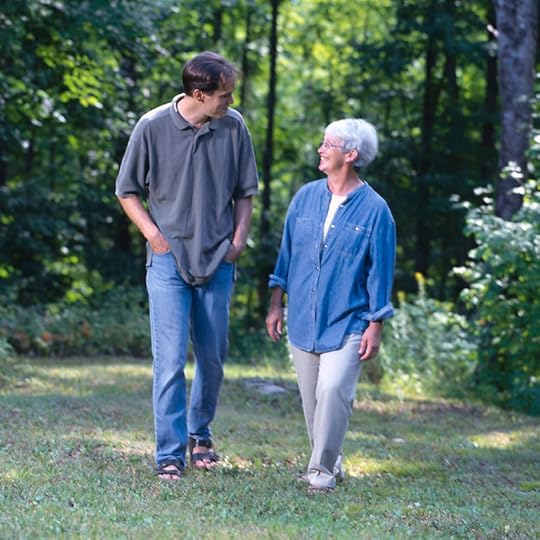
We are all mortal. We are all going to die. And yet each day when we rise with that virtual list pounding in our heads as to what we have to accomplish, death is never on the list. And it shouldn’t be. But one day it will be—though it may be totally unexpected. Because—yes, we are all mortal.
In his comprehensive and helpful book Being Mortal, Dr. Atul Gawande (Complications, Better, The Checklist Manifesto) once again forges new territory as he educates physicians, other medical personnel and us about the importance of choice when one is severely ill or close to death. Because doctors are trained to heal and to save, more and more patients and their caregivers are realizing that how we will be living, the quality of our individual lives should be a major consideration when making difficult decisions about surgery, chemotherapy, clinical trials, and end-of-life therapies.
If you are in charge of someone’s health, do you know what that person truly wants?
Gawande recounts the story of a daughter whose father was hospitalized with cancer—a tumor growing and filling his spinal column. While driving across the Golden Gate Bridge to her home, she was thinking about her father’s surgery that was scheduled for the following morning. She was going over all that the doctor had said. It was almost midnight, but she suddenly realized that she didn’t truly know what her father wanted. Yes, the doctor had talked about possible outcomes—but nothing had been settled.
Make sure you know.
She turned around and drove back to the hospital, waking her father and asking him: If the surgery results in you gradually becoming a quadriplegic is that really acceptable? He thought for a while and finally answered yes. As long as he could eat chocolate ice cream and read he would accept the gradual loss of movement that might occur. The doctor was removing some of the spinal tumor but had stressed that he couldn’t get it all and the chances of it growing back were strong. So they talked! The daughter and her father had the conversation so that depending on the results of the surgery—if he woke up or if for some unknown reason he didn’t wake up—she knew—no intubation, no Intensive Care Unit for months and months because that would mean no chocolate ice cream, no reading.
The beginnings of assisted living.
Gawande writes about Keren Brown Wilson who is credited with creating the model and the term assisted living. She fought for funding and was finally able in 1981 to open Park Place in Oregon, utilizing the following definition of the type of care the facility was offering: Assisted living… is a program that promotes resident self-direction and participation in decisions that emphasize choice, dignity, privacy, individuality, independence and homelike surroundings.
One of the things Wilson assured her clients, something they had asked for: each home or unit would have a lock on its door. Because nursing homes were more like large wards where people had little that they could identify as theirs and staff had access to their “space” whenever they considered it necessary. Wilson’s experiment was a huge success and assisted living facilities sprung up all over the United States. Some statistics: since 1981 there are 40,000 more assisted living facilities. Read more at: http://www.assistedlivinghistory.com
What current senior homes provide.
The assisted living model includes 24 hour staffing so there is always someone “in house” to provide needed care. Residents have their own home or apartment and they can prepare meals if they choose to, but there is often a community area for eating meals and participating in activities. Today, many senior living residences have a variety of living options. In addition to independent and assisted living areas special care units now exist. These specialty units complete continuation of care: if a client ages or health deteriorates, 24 hour nursing care or a locked unit for Alzheimer’s and dementia is available.
Gawande and his father.
The most affecting portion of the book is Gawande’s open discussion of helping his father who also developed a tumor in his spine and slowly found his independent life as a doctor, husband and father slipping away. The irony of researching and writing this book and then being faced with the very same difficult and personal issues of his interviewees underlines the strength of this physician-writer. He writes:
Certainly, suffering at the end of life is sometimes unavoidable and unbearable, and helping people end their misery may be necessary. Given the opportunity, I would support laws to provide these kinds of prescriptions to people. About half don’t even use their prescription. They are reassured just to know they have this control if they need it. But we damage entire societies if we let providing this capability divert us from improving the lives of the ill. Assisted living is far harder than assisted death, but its possibilities are far greater, as well.
My personal experience.
The last sentence rang true for me as I watched my mother experience living alone in her condo, then losing her ability to drive, then finally agreeing to move to a senior center. She did so with the hope that she could reside in independent living. But the beginning of her dementia signaled that assisted living would be her destination. As the months piled on, I often had to remind her to go to dinner or to take her medication. Soon the nurse was in control of that and as the disease progressed, Mom finally lived in the memory unit, something that was very hard for me and my family. There was no other solution. Her dementia prevented her from living with us as she could never be left alone near a stove or other appliance that might do her harm or worse. I remember arguing with the staff that my mother would never be a “flight risk.” I was wrong, even about that! Reading Being Mortal helped underline for me that we made the right choices.
End of life decisions should always include choice.
And that is what Gawande emphasizes in this book: choice. The cases he relates are all about allowing the patient to decide: should I have another surgery when death could be less than weeks away? Decision: no. Hospice: yes. Gawande takes us on his own personal journey of watching Hospice nurses do their work. He is amazed at how they approach a dying client and how they are able to help this person choose what they need as their end of life journey begins.
Gawande writes: When it is hard to know what will happen, it is hard to know what to do. But the challenge, I’ve come to see, is more fundamental than that. One has to decide whether one’s fears or one’s hopes are what should matter most.
P.S. In 1990, the state of Oregon began to research a better way to insure that patients being treated in the hospital or by EMT’s would have their healthcare wishes properly followed. Called the Physician Orders for Life Sustaining Treatment or POLST, the final stage for completion of the form occurred in 2009.
Definition of the POLST
POLST is a medical order. For those with serious illness or frailty, a POLST Form is completed with your health care professional to direct the kinds of treatment you want in a medical crisis. As a seriously ill or frail patient, POLST orders help give you more control over the treatments you do or do not want to receive in a medical crisis. The form works even if you later lose the ability to speak for yourself. The POLST order is signed by your physician, nurse practitioner or physician assistant after a discussion with you and/or your Health Care Representative. Since it is a medical order that will be followed in an emergency, it is important that it reflect your wishes now, in your current state of health.
To see if you live in a state where the POLST form is used, go here.
Also, to view a video of how the POLST works go here.
P.P.S. The state of California has just made assisted-suicide legal.
Thanks to: www.gone-ta-pott.com
(Visited 22 times, 22 visits today)


